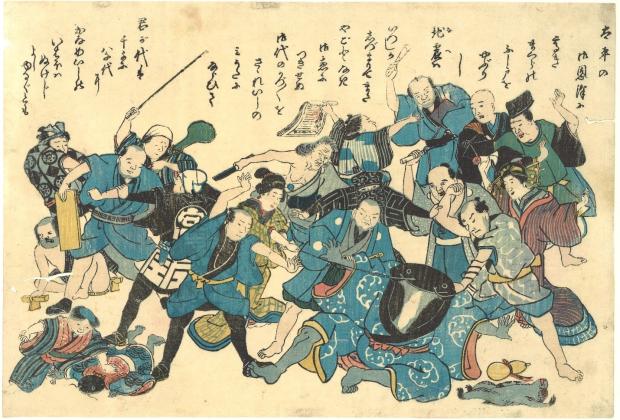
Anonymous, “Oh, for the Blessings of Tranquility.” Woodblock print, ink and colors on paper, 1855. National Museum of Japanese History, Sakura, Japan.
807 Schermerhorn Hall
RSVP: mo2486@columbia.edu
The 7.0 magnitude Ansei Earthquake struck Edo on November 11, 1855, with an epicenter near the mouth of Arakawa River. The quake not only caused some 15,000 homes to collapse with a loss of around 10,000 lives but was followed by a raging fire that engulfed sections of the city including that of the central government. It also released the publishing industry from censorship, as relevant government offices also fell victim to the disaster. This paper centers on the response of art to disaster, in this case study, in a situation without censorship. The aim is to explore how artists have responded to such events and how their often-innovative work can dramatize catastrophes, make them easy to digest, filter them through humor and other emotions, and even function as therapy for the amelioration of suffering.
